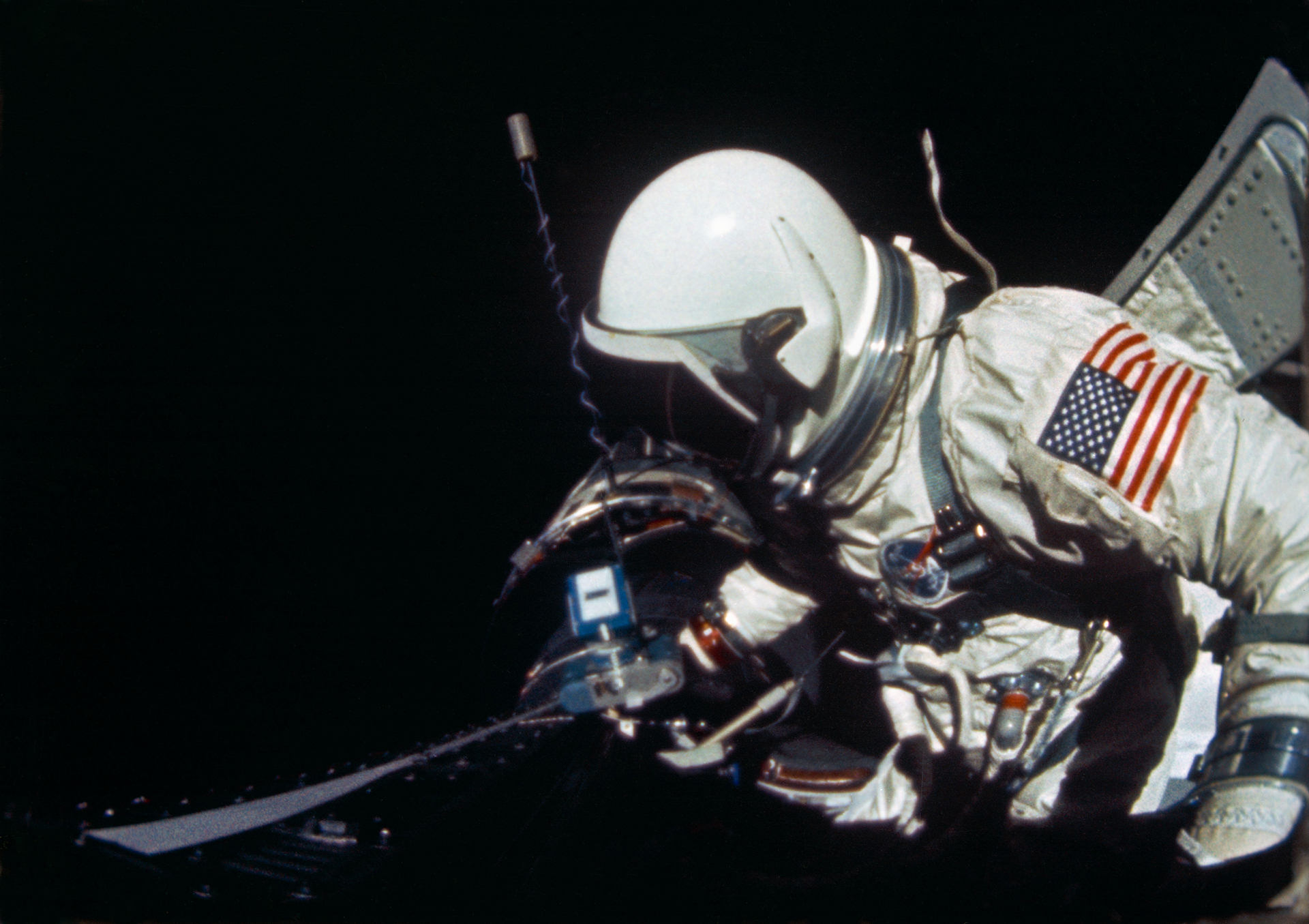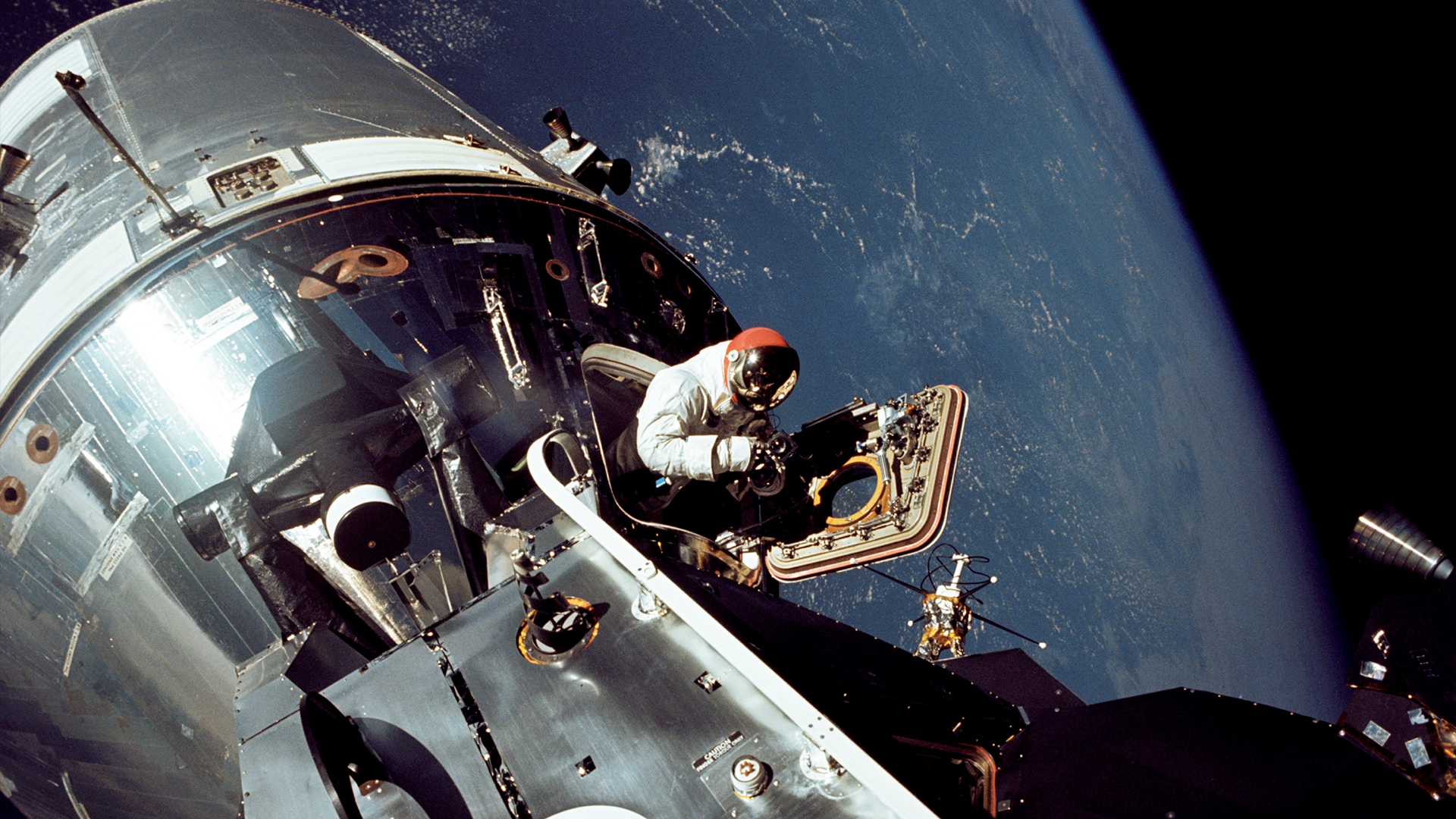Polaris Dawn: World’s 1st commercial spacewalk was history’s 20th stand-up EVA

Two private astronauts conducting the first commercial spacewalk did not so much float out of their spacecraft as they did “stand up.”
Polaris Dawn crewmates Jared Isaacman and Sarah Gillis took turns emerging from the upper hatch of SpaceX’s Dragon spacecraft “Resilience” on Thursday (Sept. 12). It was the first time that non-government astronauts have left the protective confines of their vehicle for the vacuum of space. It was also the 20th stand-up extravehicular activity (SEVA) in history.
“I think back at home, we all have a lot of work to do, but from here, Earth sure looks like a perfect world,” said Isaacman as he cleared the Dragon’s hatch and saw the lit planet before heading into a night pass.
Isaacman, the billionaire entrepreneur who funded this five-day flight and two more Polaris Program missions to follow, was the first to pop his helmet-covered head out from where a docking ring would normally be if the Dragon was connecting with the International Space Station. Instead, SpaceX equipped the capsule with the “Skywalker,” a set of rails and foot holds that was specifically designed to keep the tethered and umbilical-connected astronauts in contact with the vehicle.
With the nose of the Dragon pointed towards Earth and its deployed nose cap acting as a shield less any micrometeoroid debris come zipping along, Isaacman and Gillis each took about 10 minutes to put SpaceX’s EVA suit through its paces.
“It includes all sorts of technology, including a heads-up display, a helmet camera [and] an entirely new architecture for joint mobility,” said Polaris Dawn crewmate Anna Menon of SpaceX’s new EVA suits during a pre-fight press conference. “There is thermal insulation throughout the suit, including a copper and indium tin oxide visor that provides both thermal protection and solar protection. And then throughout, there is all types of redundancy, both in the oxygen supply feed to the suit and all of the valves and all of the seals across the suit.”
Inside Resilience, Scott “Kidd” Poteet and Menon also wore EVA spacesuits, as Dragon’s lack of an airlock meant that the entire cabin had to be depressurized for their crewmates’ spacewalk. The same approach was first used by NASA for its Gemini spacecraft in the mid-1960s, which is also when a distinction between conducting a full-up EVA, a SEVA or IVA (intravehicular activity) was first defined.
Poteet and Menon, as IVA crew members, assisted Isaacman and Gillis by wrangling the 8 feet (2.4 m) of umbilicals that fed oxygen and power to the two spacewalkers’ suits, extending from the garments to back inside the Dragon.
As Isaacman and Gillis never fully left the Dragon’s vestibule — they kept at least some part of their body inside at all times — the two added to the count of stand-up EVAs performed since 1966, when NASA astronaut Michael Collins stood up on his seat and took photos outside the pilot-side hatch of the Gemini 10 capsule.
“We are not going to be floating around,” said Isaacman of his own SEVA prior to the launch of the Polaris Dawn mission. “We want to learn from history and always keep at least one point of contact.”

In the 58 years since Collins’ made his first spacewalk, other astronauts, Russian cosmonauts and Chinese taikonauts have stood up out of spacecraft hatches.
In 1969, David Scott stood up out of the command module hatch while his fellow Apollo 9 crewmate Rusty Schweickart performed a full-up spacewalk outside of the lunar module in a test in Earth orbit. Two years later, Scott conducted a SEVA out the top hatch of the Apollo 15 moon lander to survey his surroundings before conducting three moonwalks on the lunar surface.
Apollo astronauts Jim Irwin, Charlie Duke and Harrison Schmitt also performed stand-up EVAs to photograph their crewmates as film and science results were retrieved during a trio of deep space EVAs between the moon and Earth.
In 1977, Georgy Grechko and Yuri Romanenko became the first cosmonauts to perform stand-up EVAs. Floating halfway out of the Salyut 6 space station’s airlock, Grechko inspected a docking adapter for damage while both tested what was then the brand-new Orlan spacesuits.

The most recent stand-up EVA before Polaris Dawn was in 2008 during the first spacewalk by a Chinese taikonaut. Liu Boming spent most of the 22-minute EVA inside the orbital module of the Shenzhou 7 spacecraft, but at one point stood up to hand Zhai Zhigang a Chinese national flag to wave outside.
The Polaris Dawn spacewalk was the 477th EVA (of any type) in history. The spacewalk began at 6:12 a.m. EDT (1012 GMT) when the crew switched to their suits’ oxygen supply and lasted one hour and 46 minutes.
Follow collectSPACE.com on Facebook and on Twitter at @collectSPACE. Copyright 2024 collectSPACE.com. All rights reserved.



